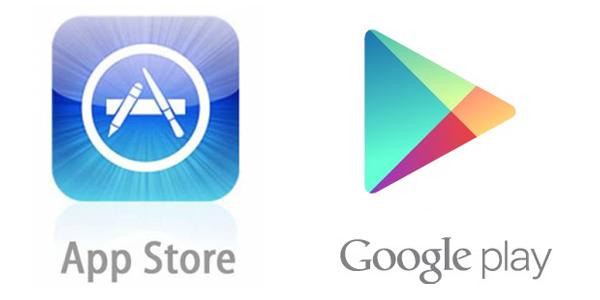In this blog, we will discuss platform-mediated networks. Platforms, as opposed to traditional pipeline businesses that create and sell their own products to users, are “intermediaries that connect two or more distinct groups of users and enable their direct interaction” (Zhu & Furr, 2016). A platform-mediated network is comprised of users whose transactions are subject to direct and/or indirect network effects (Eisenmann et al., 2009). Thanks to IT, there is no longer the need to own a physical infrastructure and assets anymore. The infrastructure can be digital. An interesting platform to look at is an application store. An app store is a type of digital distribution platform for computer, mobile and desktop applications or software.
An app store can be visualized by using a platform ecosystem, consisting of four main players: the owner, providers, producers and consumers.

The two biggest players are Apple’s iOS App Store and Google’s Android Google Play Store. These stores look similar in what they help a user achieve, but they work differently.
– Open versus closed source systems. Google Play is a platform for open source applications and is the biggest of various marketplaces for Android apps. The regulations are relatively lax. Apple’s App store sell their iOS closed-source code to developers, but delegate very little control.
– Developer restrictions, costs and incentivization. From a developer’s viewpoint, the two app stores are different in terms of restrictions, costs and incentivization. Google Play’s developers are incentivized by fewer administrative obstacles and lower development costs. Apple App stores’ developers are mostly incentivized by monetization, since the licensing terms are strict and the developing costs are higher.
– Fragmentation. The majority of iOS users are running the most current version on their devices. This makes it easy for developers to sell apps on the Apple App Store to provide support and optimize the user experience. However, the number of Android OS users using the current version is much more fragmented, making it difficult to make all apps compatible with all devices.
– Quality versus quantity trade-off for consumers. There is a trade-off between the quality of the apps, which is higher for the Apple App Store because of the closed source software and severe restrictions, and the quantity, which is higher for the Google Play Store, because of the easily and cheaply accessible open source software and less strict guidelines.
The strengths and weaknesses for Apple and Google are summarized below for each player of the platform ecosystem.

Finally, the industry is analyzed by using Porter’s Five Forces framework.
- Bargaining power of buyers ánd suppliers is high, because the network value largely depends on these players, due to positive network-value effects.
- Threat of entry is low, because new app stores may never be able to reach the same kind of critical mass.
- Threat of substitutes is moderate, as more and more operators are attempting to move into the industry despite the challenges.
- Intensity of rivalry is moderate, since there are only two major players in the market.
For the future, we predict that a free-mium pricing model could take a new turn if subscription models become the status quo. Also, we expect that the industry will become more fragmented as more operators are attempting to move into the industry despite the challenges. Furthermore, we expect that new entrants will focus on the emergence of niche app stores, leading to a long-tail trend in the app store industry. Finally, a shift from platform service offering to a customer-segment driven service might occur in the future.
Sources:
Eisenmann, T., Parker, G., and Van Alstyne, M.W. 2009. Opening Platforms: How, When and Why? in Platforms, Markets and Innovation, Gawer, A. (ed.), Northampton, MA: Edward Elgar, pp. 131-162.
Dogtiev, A., 2016. App Store Statistics Roundup. [Online] Available at: http://www.businessofapps.com/app-store-statistics-roundup/ [Accessed 29 09 2016].
Parker, G. & Van Alstyne, M., 2016. Platform revolution: How Networked Markets Are Transforming the Economy and How to Make Them Work for You. 1 ed. s.l.:W.W. Nortion & Amp.
Opensource.com, 2016. What is open source?. [Online] Available at: https://opensource.com/resources/what-open-source [Accessed 29 09 2016].
Zhu, F. & Furr, N. (2016) Products to Platforms: Making the Leap. Harvard Business Review (04), 72-78
Group 58:
A. Schwarz 461214
M.S. Stegehuis 385701
K. Viset 372877
A.K. ter Haar 419249

